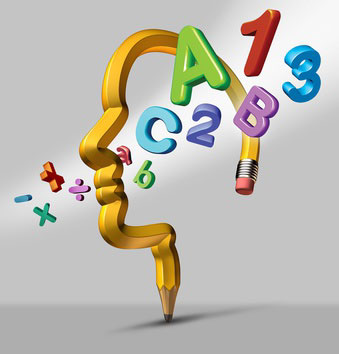Learning Styles of the 16 Personality Types
 Learning styles refer to differences in how people learn based on their preferences, strengths and weaknesses. The differences may pertain to various elements of the learning process such as taking in, comprehending, memorizing and recollecting information.
Learning styles refer to differences in how people learn based on their preferences, strengths and weaknesses. The differences may pertain to various elements of the learning process such as taking in, comprehending, memorizing and recollecting information.
Many observations suggest that the learning process is most effective when it is in line with our learning style preferences. Therefore, from a practical standpoint, it is useful to know which learning methods are likely to be most effective for us, to help us acquire knowledge quickly and effectively. And if you are an educator, being aware of your students’ learning styles can help you implement a teaching approach most suitable for your particular group.
There are many ways of classifying learning styles that draw from different theories: theories of intelligence, experiential theories (Kolb, 1984), sensory modalities (the VARK model - Fleming & Mills, 1992), cognitive styles, or psychological types. A prominent psychological type theory is Jung’s theory of psychological types, popularized by Briggs Myers, a Jungian theorist; let’s take a look how a person’s preferences in terms of Jung’s and Briggs Myers’ approach to personality type may influence learning styles:
- The preference of general attitude - extraverted (E) vs. introverted (I) - reflects the direction of an individual’s general interest and, as such, indicates where their interests and motivation lie. An introvert’s motivation and interests primarily stem from and are driven by their inner world, whereas an extravert is primarily motivated by the world outside of themselves, and most of their interests are externally focused.
- People with the intuition (N) preference perceive the world and think in broader categories, whereas sensing (S) individuals perceive the world and think about things in a more concrete, direct way.
- People with the feeling (F) preference tend to judge and respond to events based on their feelings, whereas people with the thinking (T) preference tend to do it based on reason and logic.
- People with the judging (J) preference comprehend information in a more structured way and are likely to prefer a more systematic and structured learning process, whereas people with the perceiving (P) preference might favor a less rigid, more heuristic approach to learning and might prefer a trial-and-error method of comprehending information.
Consequently, personality type preferences may affect an individual’s motivation and interest when it comes to learning and studying, and the ease (or difficulty) with which they take in, process and recollect information. As a result, whether or not the learning format, process, environment, and the presentation of the material are in line with an individual’s personality type preferences may help or hinder their learning.
The following are learning style descriptions for the 16 personality types based on Jung’s E-I, S-N, and T-F dichotomies, as well as the J-P relationship (Briggs Myers emphasized the importance of seeing it as a fourth dichotomy influencing personality type).
We hope that these learning style descriptions can help further research on the specifics and effectiveness of using this approach to learning styles in education to benefit both students and educators.
What is your personality type? Take the Test!